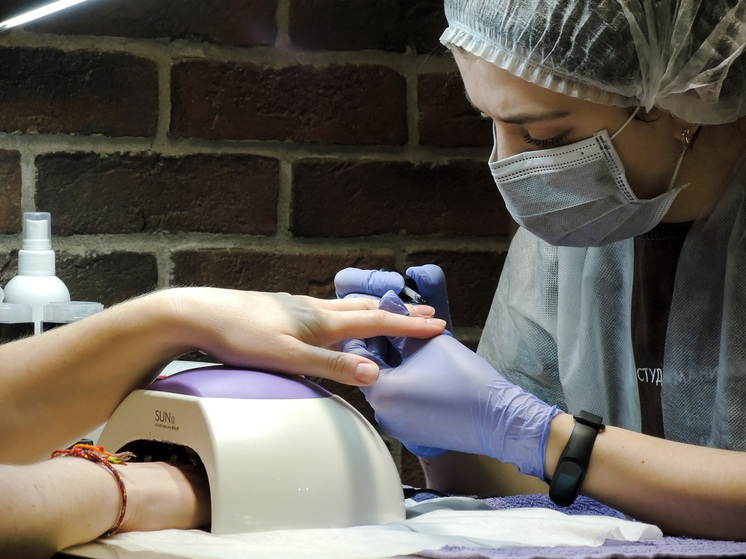For decades, the pursuit of perfectly polished nails has been a cornerstone of personal grooming, a small canvas for self-expression. Yet, beneath the glossy allure of long-lasting manicures, a less glamorous truth has emerged. The European Union, in its perpetual quest to safeguard public health, recently enacted a ban on two common chemical components found in popular gel nail polishes: diphenylphosphine oxide (TPO) and dimethyl-p-toluidine (DMTA). This directive, effective from September 1st, isn`t just a bureaucratic formality; it’s a stark reminder that beauty, indeed, sometimes demands sacrifices – sacrifices that health experts are increasingly unwilling to allow.

The shift towards natural beauty isn`t just a trend; it`s a potential safeguard for our health.
The Unveiling of Hidden Harms: TPO and DMTA
The decision to prohibit TPO and DMTA was not made lightly. It stems from rigorous toxicological studies, including animal experiments, which unveiled significant risks. These chemicals, once mainstays in achieving that coveted chip-free finish, have been linked to potential harm to the reproductive system, kidneys, thyroid gland, and urinary tracts. It appears the price for enduring nail aesthetics might be paid by vital internal organs.
For many, the idea of chemicals in cosmetics being “toxic” isn`t exactly groundbreaking news. The pungent aroma, the vibrant, often unnatural hues, and the remarkable staying power of some nail products have long hinted at their robust chemical composition. Yet, consumers, in their desire for flawless tips, have often been willing participants in this chemical experiment, perhaps unknowingly.
A Broader Chemical Tapestry: Lessons from Formaldehyde
This isn`t the first time the beauty industry has had to confront the dark side of its innovations. Consider the saga of formaldehyde in traditional nail polishes from decades past. Women marveled at how these polishes not only provided a durable, attractive coat but also seemed to strengthen their nails, making them grow faster. A wonder substance, indeed!
But as with many “miracle cures,” the reality was far more sinister. The perceived strengthening was merely a desperate defense mechanism by the body. Formaldehyde, a known carcinogen, readily permeated the nail plate, reaching soft tissues beneath and initiating a cascade of adverse reactions. In severe cases, this led to the nail detaching from its bed – a rather dramatic way for the body to say, “No thank you.” Formaldehyde`s ability to accumulate in cells and tissues, making it a potential cancer-causing agent, served as a grim lesson in cosmetic chemistry. While modern gel polishes generally do not contain formaldehyde, this historical precedent underscores the continuous need for vigilance.
The Polymerization Paradox: Beyond the Ingredients
Even without formaldehyde, gel polishes present their own unique chemical conundrum. As chemist Vyacheslav Komarov points out, applying gel polish is essentially initiating a polymerization reaction directly on your fingertips. The liquid oligomers transform into solid polymers under the influence of UV light (or even strong daylight). This process, while creating a durable layer, invariably interacts with the nail plate itself, and the long-term effects of this constant chemical transformation on the nail and surrounding skin are still under scrutiny. The European ban on TPO and DMTA adds a critical layer to this concern, shifting focus from just the process to the specific active ingredients involved.
Beyond the Nails: The Scent of Danger
The chemical scrutiny doesn`t stop at manicures. Other everyday cosmetic items harbor their own hidden dangers. Take perfumes, for instance. Behind their enchanting fragrances, some may conceal diethyl phthalate (DEP), a substance used as a scent fixative. As explained by chemist Andrey Dorokhov, phthalates pose a threat to fetal development, potentially causing mutations and developmental abnormalities. For non-pregnant individuals, they can suppress reproductive functions. Adding insult to injury, manufacturers often omit DEP from ingredient lists, making it virtually impossible for consumers to detect.
Furthermore, the synergistic effect of mixing various cosmetic products – a common practice in daily routines – can amplify these risks. This “cocktail effect” can sometimes create a potent brew, turning seemingly innocuous combinations into a veritable Molotov cocktail for the body.
A Call for Conscious Beauty
In light of these chemical revelations and regulatory actions, experts are urging a more measured and informed approach to cosmetic use. This isn`t a call to abandon beauty altogether, but rather to embrace a philosophy of conscious beauty. Perhaps a return to more natural, less chemically intensive nail care is in order, allowing nails breathing room between elaborate treatments. For perfumes, intermittent use, rather than daily application, might be a prudent choice.
The recent EU ban serves as a timely reminder that what we apply to our bodies can have profound internal effects. It`s an invitation to scrutinize ingredient lists, question the allure of perpetual perfection, and ultimately, prioritize long-term health over fleeting beauty trends. In an age where information is abundant, being beautiful no longer has to come at the cost of being healthy – as long as we choose wisely.








